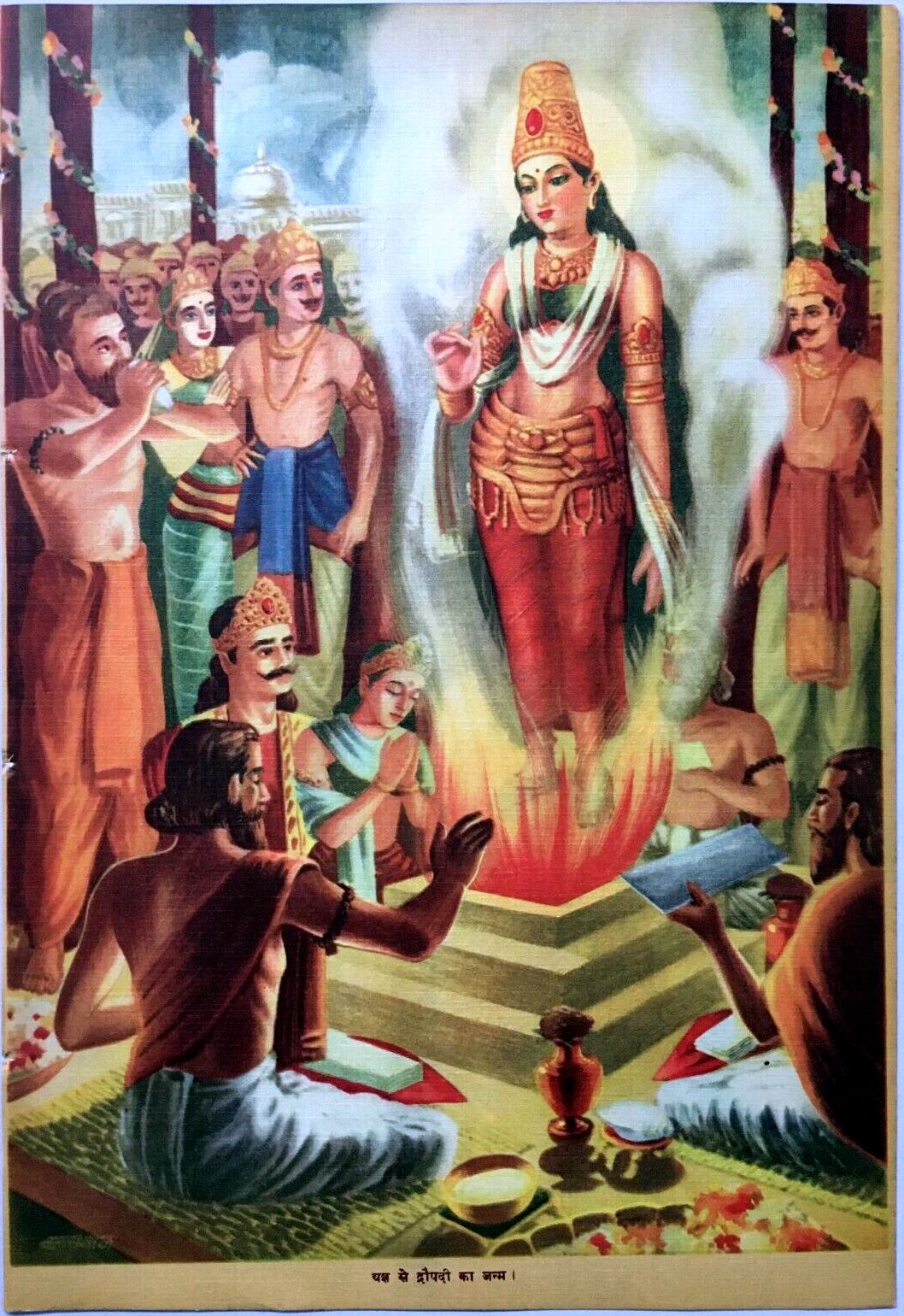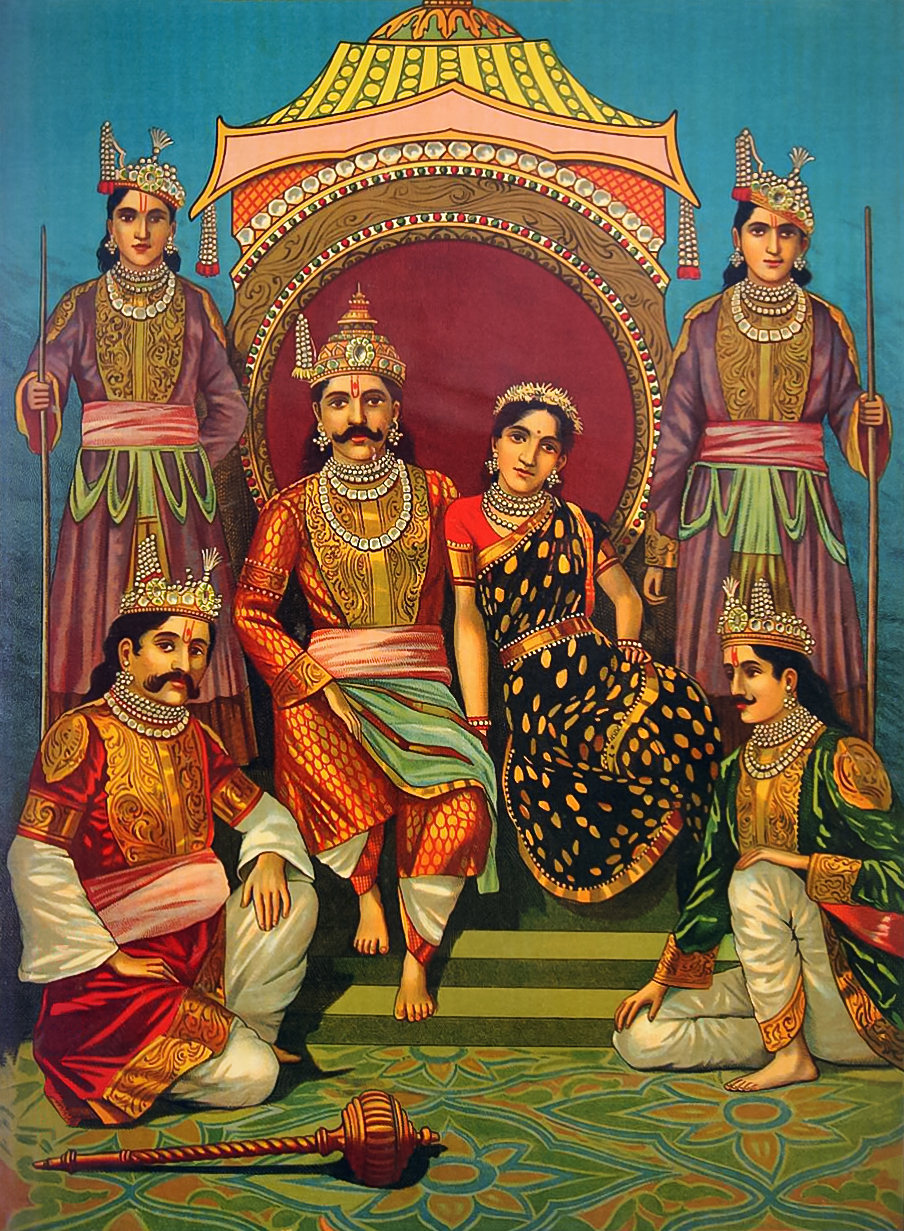|
Subhadrā
Subhadra (, ) is a character in the ancient Hindu epic ''Mahabharata''. She is a princess from the Yadava clan and the sister of Krishna and Balarama. Subhadra married Arjuna, one of the Pandava brothers and had a son named Abhimanyu. Subhadra is part of the triad of deities worshipped at the Jagannath Temple at Puri, along with Krishna (as Jagannatha) and Balarama (or Balabhadra). One of the chariots in the annual Ratha Yatra is dedicated to her. Etymology and other names The Sanskrit name ''Subhadrā'' is made up of two words: ''su'' and ''bhadrā''. The prefix ''su'' denotes goodness, while ''bhadrā'' is translated as fortune or excellence. The name means 'glorious', 'fortunate', 'splendid', or 'auspicious'. Subhadra is referred to as ''Bhadrā'' (भद्रा), literally 'fortunate', when she is introduced to Arjuna in the ''Mahabharata''. According to the appendix of the ''Mahabharata'', the '' Harivamsa'', her birth name was ''Citrā'' (चित्रा) which me ... [...More Info...] [...Related Items...] OR: [Wikipedia] [Google] [Baidu] |
Swayamvara
''Svayaṃvara'' ( ) is a matrimonial tradition in ancient Indian society where a bride, usually from '' Kṣatriya'' (warrior) caste, selects her husband from a group of assembled suitors either by her own choice or a public contest between her suitors. This practice is mainly featured in the two major Sanskrit epics, the '' Mahābhārata'' and the '' Rāmāyaṇa'', though its prevalence and portrayal vary significantly between them. Origins of ''Svayaṃvara'' can be traced back to the Vedic period and few scholars suggest that it emerged from the ''Gāndharva'' marriage tradition, diverging from more ritualistic and arranged forms of marriage, and developed as a narrative device within the epics to highlight the heroism and valor of protagonists, aligning with the ''Kṣatriya'' ethos of competition and martial prowess. Despite being closely associated with the epics, ''Svayaṃvara'' is not listed as a form of marriage in the ''Dharmaśāstra'', a collection of Sanskrit te ... [...More Info...] [...Related Items...] OR: [Wikipedia] [Google] [Baidu] |
Devi
''Devī'' (; ) is the Sanskrit word for 'goddess'; the masculine form is Deva (Hinduism), ''deva''. ''Devi'' and ''deva'' mean 'heavenly, divine, anything of excellence', and are also gender-specific terms for a deity in Hinduism. The concept and reverence for goddesses appears in the Vedas, which were composed around the 2nd millennium BCE. However, they did not play a vital role in that era. Goddesses such as Durga, Kali, Lakshmi, Parvati, Radha, Saraswati and Sita have continued to be revered in the modern era. The medieval era Puranas witness a major expansion in mythology and literature associated with Devi, with texts such as the ''Devi Mahatmya'', wherein she manifests as the ultimate truth and supreme power. She has inspired the Shaktism tradition of Hinduism. Further, Devi is viewed as central in the Hindu traditions of Shaktism and Shaivism. Etymology ''Devi'' and ''deva'' are Sanskrit terms found in Vedic literature around the 3rd millennium BCE. ''Deva'' is masculi ... [...More Info...] [...Related Items...] OR: [Wikipedia] [Google] [Baidu] |
Ratha Yatra
Ratha Yatra (), or chariot festival, is any public procession in a chariot. They are held annually during festivals in India, Nepal, and Sri Lanka. The term also refers to the popular annual Ratha Yatra of Puri that involves a public procession with a chariot with deities Jagannath (Vishnu avatar), Balabhadra (his brother), Subhadra (his sister), and Sudarshana Chakra (his weapon) on a ratha, which is a wooden deula-shaped chariot. Ratha Yatra processions have been historically common in Vishnu-related (Jagannath, Rama, Krishna) traditions in Hinduism across India, in Shiva-related traditions, saints and goddesses in Nepal, with Tirthankaras in Jainism, as well as tribal folk religions found in the eastern states of India. Notable Ratha Yatras in India include the Ratha Yatra of Puri, the Dhamrai Ratha Yatra in Bangladesh and the Ratha Yatra of Mahesh. Hindu communities outside India, such as in Singapore, celebrate Ratha Yatra such as those associated with Jagannat ... [...More Info...] [...Related Items...] OR: [Wikipedia] [Google] [Baidu] |
Bhandarkar Oriental Research Institute
The Bhandarkar Oriental Research Institute (BORI) is a research institute involved in the conservation, preservation, and research of old manuscripts and rare books related to Orientalism, particularly Indology. It is located in Pune, Maharashtra, India. It was founded on 6 July 1917 and named after Ramakrishna Gopal Bhandarkar (1837–1925), a scholar of Orientalism. The institute is well known for its collection of old Sanskrit and Prakrit manuscripts. The institute This institute is of a public trust registered under Act XXI of 1860. Initially, the institute received an annual grant of 3,000 rupees from the government of Bombay. Presently, it is partially supported by annual grants from the government of Maharashtra. The institute also receives grants from the government of India and the University Grants Commission for specific research projects. The institute has one of the largest collections of rare books and manuscripts in South Asia, consisting of over 125,000 books ... [...More Info...] [...Related Items...] OR: [Wikipedia] [Google] [Baidu] |
Rohini Devi
In Hindu mythology, Rohini (, ) is the first consort of Vasudeva , and the mother of the Hindu deities Balarama and Subhadra. She plays a prominent role in the upbringing of Krishna. Legend Rohini is described as the daughter of the king Bahlika, making her a cousin of Bheeshma. She is married to Vasudeva, a descendant of Yadu, a Chandravamsha king. Her sister, Pauravi, was also married to Vasudeva. Vasudeva also married Devaki, a princess of Mathura. The couple is imprisoned by Devaki's brother Kans, soon after their marriage. as a divine prophecy predicted Kans's death by Devaki's eighth son. While Vasudeva is imprisoned, Rohini lives at the house of her husband's cousin Nanda, in Vraja. While all previous sons of Devaki are slain, the seventh embryo is transferred to Rohini's womb. Rohini gives birth to Balarama. Krishna, the eighth child of Devaki, was exchanged with the daughter of Nanda and Yashoda in secrecy. Yashoda (foster-mother of Krishna) and Rohini play a ... [...More Info...] [...Related Items...] OR: [Wikipedia] [Google] [Baidu] |
Dvārakā
Dvārakā, also known as Dvāravatī (Sanskrit द्वारका "the gated [city]", possibly meaning having many gates, or alternatively having one or several very grand gates), is a sacred historic city in the sacred literature of Hinduism, Jainism, and Buddhism. It is also alternatively spelled as Dvarika. The name Dvaraka is said to have been given to the place by Krishna, a major god in Hinduism. In the ''Mahabharata'', it was a city located in what is now Dwarka, formerly called Kushasthali, the fort of which had to be repaired by the Yadavas. In this epic, the city is described as a capital of the Anarta Kingdom. According to the ''Harivamsa'' the city was located in the region of the Sindhu Kingdom. In the Hindu epics and the Puranas, Dvaraka is called Dvaravati and is one of seven Tirtha (Hinduism), Tirtha (pilgrimage), Sapta Puri (seven sacred cities of Hinduism), for spiritual liberation. The other six are Mathura, Ayodhya (Ramayana), Ayodhya, Varanasi, Ka ... [...More Info...] [...Related Items...] OR: [Wikipedia] [Google] [Baidu] |
Draupadi
Draupadi (), also referred to as Krishnā, Panchali and Yajnaseni, is the central heroine of the Indian epic poetry, ancient Indian epic ''Mahabharata''. In the epic, she is the princess of Panchala Kingdom, who later becomes the empress of Kuru kingdom, Kuru Kingdom. She is the Polyandry, common wife of the five Pandava brothers—Yudhishthira, Bhima, Arjuna, Nakula, and Sahadeva—and is renowned for her beauty, courage, devotion, intelligence and rhetorical skills. She is also described as ''sakhi''—a close friend—of the god Krishna. Draupadi, along with her twin brother Dhrishtadyumna, emerges fully grown from a ''yajna'' (fire sacrifice) organized by King Drupada of Panchala. Draupadi’s marriage is determined through a ''svayamvara'' (self-choice ceremony), structured as an archery contest of great difficulty. Arjuna succeeds in the challenge and wins her hand. However, their mother, Kunti, unknowingly instructs her sons to share whatever they had brought home, resu ... [...More Info...] [...Related Items...] OR: [Wikipedia] [Google] [Baidu] |
Pandavas
The Pandavas (Sanskrit: पाण्डव, aɳɖɐʋᵊ IAST: Pāṇḍava) is a group name referring to the five legendary brothers, Yudhishtira, Bhima, Arjuna, Nakula, and Sahadeva, who are central figures of the Hindu epic ''Mahabharata''. They are acknowledged as the sons of Pandu, the King of Kuru, but were fathered by different '' Devas'' (gods) due to Pandu's cursed inability to naturally sire children. In the epic, the Pandavas married Draupadi, the princess of Panchala, and founded the city of Indraprastha after the Kuru Kingdom was split to avoid succession disputes. After the split, the other part of the kingdom was ruled by their cousins, the Kauravas. However, the Pandavas lost their kingdom to Duryodhana (eldest and king of the Kauravas) when Yudhishthira gambled it away during a game of dice. The bet Yudhishtira agreed to was that the Pandavas would hand the kingdom over to the Kauravas and go into exile for 12 followed by an year in hiding. After this ... [...More Info...] [...Related Items...] OR: [Wikipedia] [Google] [Baidu] |
Pilgrimage
A pilgrimage is a travel, journey to a holy place, which can lead to a personal transformation, after which the pilgrim returns to their daily life. A pilgrim (from the Latin ''peregrinus'') is a traveler (literally one who has come from afar) who is on a journey to a holy place. Typically, this is a physical journey (often on foot) to some place of special significance to the adherent of a particular religious belief system. Background Pilgrimages frequently involve a journey or search of morality, moral or spirituality, spiritual significance. Typically, it is a journey to a shrine or other location of importance to a person's beliefs and faith, although sometimes it can be a metaphorical journey into someone's own beliefs. Many religions attach spiritual importance to particular places: the place of birth or death of founders or saints, or to the place of their "calling" or spiritual awakening, or of their connection (visual or verbal) with the divine, to locations where ... [...More Info...] [...Related Items...] OR: [Wikipedia] [Google] [Baidu] |
Neelakantha Chaturdhara
Neelakantha Chaturdhara (, IAST: ''Nīlakaṇṭha Caturdhara'') (also referred as Neelakantha Chaturdhar) was a scholar who lived in Varanasi in the later half of the 17th century, famous for his commentary on the Mahabharata. References Further readingby Christopher Minkowski, ''India Seminar'' No. 608 (April 2010). External links * {{DEFAULTSORT:Chaturdhara, Neelakantha Indian Sanskrit scholars Mahabharata Year of death unknown Year of birth unknown 17th-century Indian scholars Scholars from Varanasi ... [...More Info...] [...Related Items...] OR: [Wikipedia] [Google] [Baidu] |
Adi Parva
The Adi Parva ("Book of the Beginning") is the first of the eighteen ''parvas'' (books) of the Indian epic ''Mahabharata''. "Ādi" (wiktionary:आदि#Sanskrit, आदि) in Sanskrit means "first". Adi Parva traditionally has 19 parts and 236 ''adhyayas'' (chapters). The Textual criticism, critical edition of Adi Parva has 19 parts and 225 chapters. Adi Parva describes how the epic came to be recited by Ugrasrava Sauti to the assembled rishis at the Naimisha Forest after first having been narrated at the ''sarpasatra'' of Janamejaya II, Janamejaya by Vaishampayana at Taxila. It includes an outline of contents from the eighteen books, along with the book's significance. The history of the Bhāratas and the Bhrigus are described. The main part of the work covers the birth and early life of the Mahabharata#Kuru family tree, princes of the Kuru Kingdom and the persecution of the Pandavas by Dhritarashtra. Structure and chapters The Adi Parva consists of 19 ''upa-parvas'' (parts, l ... [...More Info...] [...Related Items...] OR: [Wikipedia] [Google] [Baidu] |








